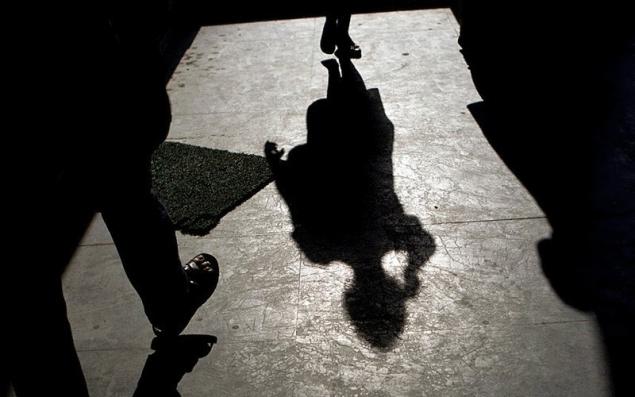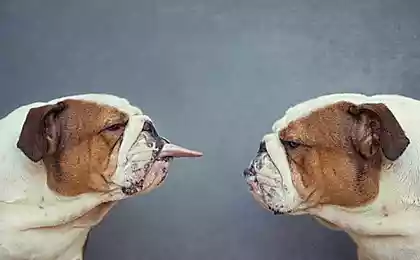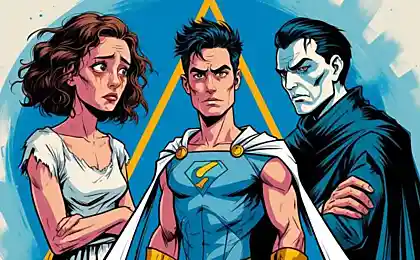400
Eyes wide shut— why the witnesses did not seek to help the victim
Humanism seems to be the unshakable Foundation of Western culture: life, liberty and security of the individual upholds the main values of civilized society. But often, big words are not tested by reality. What determines the willingness to help the victim of a crime, and that this "witness apathy"? Aeon magazine has published an article about the scientific experiments that investigate the desire to help others. T&P transferred the most important thing.

Bethesda, a Washington suburb, quiet safe place, where usually migrate well-educated and well-paid professionals when it comes time to deal with family. One of the areas of the city recently, was the second in the list of most wealthy places in America. And yet on March 11, 2011 a young woman was brutally murdered by at the local shop (where pants for yoga retail cost $ 100). Two employees of the Apple store, which was located behind the wall, heard what was happening, began to argue about what to do, but in the end decided not to call the police.
If this happened in a poor, overcrowded, crime Rio de Janeiro, ending, perhaps, would be different: after a series of experiments, researchers found that bystanders is much more accommodating and more willing to help — for example, blind or just a passerby who dropped some object. This paradox captures the essence of the term "witness apathy", introduced in the 1960's, American psychologists John Darley and Bibbon Patched to describe the strange and often terrifying unwillingness of witnesses to intervene and prevent the crime.
For the first time this phenomenon has attracted wide attention in 1964, when the bar Manager kitty Genovese was raped and murdered near his home in Queens. All media covered the event and focused on the inaction of the neighbors. In "the new York times" the article began with a chilling phrase: "for more than half an hour 38 respectable, law-abiding citizens in Queens watched a killer in three approaches had killed his victim, causing her to stab wounds". This case has set a precedent: now we can confidently say that the days when neighbor helped neighbor, gone. True or not, but the Genovese case became a cultural meme, to describe the callousness and cruelty that have become the signs of our time.
"Most of the sympathy was demonstrated in Rio de Janeiro, a city with a population of 6.5 million people"
Impressed by this event, Darley and Latan in the late 1960-ies launched a series of experiments, the most famous of which happened in the room filled with smoke. It was one subject, or subject with two dummy parties that did not react to the smoke. Most people (75%), which was in the room alone reported the smoke, and in the second case it is done only 10%.
Darley and Latan noted two important factors. One is "diffusion of responsibility" when one considers that interference should be someone else. The other is "the power of social norms" that influence what people will coordinate their behavior with the reactions of other people.
The Genovese case provoked a wave of accusations towards the big cities. But this theory quickly cracked. Robert Levine, a social psychologist from California state University in Fresno, investigated the "sympathetic behavior" all around the world. In each city, Levine and his team conducted several experiments: they created a situation in which passers-by could somehow manifest themselves. In one experiment, for example, researchers simulated a sharp pain in my leg and fell among the clusters of people in a big shop. In the other, crossing the road, pretended to be blind. Or, the researchers "accidentally" dropped money or envelope and checked whether passers-by will try to return lost items.
The results showed that some small cities such as Paterson in new Jersey or Shreveport in Louisiana, was on quite low positions in the list, indexing sympathetic behavior. And most of all compassion — of the 23 cities studied, demonstrated in Rio de Janeiro, a city with a population of 6.5 million people. "Some mysterious part of the culture affects is you willingness to help others. This, for example, will not teach in new York, where no one helps each other and lack of empathy does not mean you are a bad person".
One of the criteria of what Levine called "a mysterious part of the culture," as in every country or city public valued more highly than personal. The most individualistic culture, American and European, put personal achievements and the collective higher consciousness. Collectivist societies, such as China, on the contrary, cherish family and group values. But it's more complicated than it seems. In 2012 in the journal "Social development", a study was published which compares the behavior in individualistic and collectivistic Italy Singapore. It turned out that in Italy, where the level of violence was higher, people are more willing to stand up for the victim.
How to become a callous person, capable of indifferent violence? Scientists for many years struggling with this issue. And the Center for control and prevention of diseases of the U.S. even organizes training sessions where the focus is on the five barriers that were called Darley and Latan, witness must:
1) ignore the situation;
2) realize that it requires intervention;
3) feel responsibility for what is happening;
4) select the method of intervention and
5) to intervene.
Source: theoryandpractice.ru

Bethesda, a Washington suburb, quiet safe place, where usually migrate well-educated and well-paid professionals when it comes time to deal with family. One of the areas of the city recently, was the second in the list of most wealthy places in America. And yet on March 11, 2011 a young woman was brutally murdered by at the local shop (where pants for yoga retail cost $ 100). Two employees of the Apple store, which was located behind the wall, heard what was happening, began to argue about what to do, but in the end decided not to call the police.
If this happened in a poor, overcrowded, crime Rio de Janeiro, ending, perhaps, would be different: after a series of experiments, researchers found that bystanders is much more accommodating and more willing to help — for example, blind or just a passerby who dropped some object. This paradox captures the essence of the term "witness apathy", introduced in the 1960's, American psychologists John Darley and Bibbon Patched to describe the strange and often terrifying unwillingness of witnesses to intervene and prevent the crime.
For the first time this phenomenon has attracted wide attention in 1964, when the bar Manager kitty Genovese was raped and murdered near his home in Queens. All media covered the event and focused on the inaction of the neighbors. In "the new York times" the article began with a chilling phrase: "for more than half an hour 38 respectable, law-abiding citizens in Queens watched a killer in three approaches had killed his victim, causing her to stab wounds". This case has set a precedent: now we can confidently say that the days when neighbor helped neighbor, gone. True or not, but the Genovese case became a cultural meme, to describe the callousness and cruelty that have become the signs of our time.
"Most of the sympathy was demonstrated in Rio de Janeiro, a city with a population of 6.5 million people"
Impressed by this event, Darley and Latan in the late 1960-ies launched a series of experiments, the most famous of which happened in the room filled with smoke. It was one subject, or subject with two dummy parties that did not react to the smoke. Most people (75%), which was in the room alone reported the smoke, and in the second case it is done only 10%.
Darley and Latan noted two important factors. One is "diffusion of responsibility" when one considers that interference should be someone else. The other is "the power of social norms" that influence what people will coordinate their behavior with the reactions of other people.
The Genovese case provoked a wave of accusations towards the big cities. But this theory quickly cracked. Robert Levine, a social psychologist from California state University in Fresno, investigated the "sympathetic behavior" all around the world. In each city, Levine and his team conducted several experiments: they created a situation in which passers-by could somehow manifest themselves. In one experiment, for example, researchers simulated a sharp pain in my leg and fell among the clusters of people in a big shop. In the other, crossing the road, pretended to be blind. Or, the researchers "accidentally" dropped money or envelope and checked whether passers-by will try to return lost items.
The results showed that some small cities such as Paterson in new Jersey or Shreveport in Louisiana, was on quite low positions in the list, indexing sympathetic behavior. And most of all compassion — of the 23 cities studied, demonstrated in Rio de Janeiro, a city with a population of 6.5 million people. "Some mysterious part of the culture affects is you willingness to help others. This, for example, will not teach in new York, where no one helps each other and lack of empathy does not mean you are a bad person".
One of the criteria of what Levine called "a mysterious part of the culture," as in every country or city public valued more highly than personal. The most individualistic culture, American and European, put personal achievements and the collective higher consciousness. Collectivist societies, such as China, on the contrary, cherish family and group values. But it's more complicated than it seems. In 2012 in the journal "Social development", a study was published which compares the behavior in individualistic and collectivistic Italy Singapore. It turned out that in Italy, where the level of violence was higher, people are more willing to stand up for the victim.
How to become a callous person, capable of indifferent violence? Scientists for many years struggling with this issue. And the Center for control and prevention of diseases of the U.S. even organizes training sessions where the focus is on the five barriers that were called Darley and Latan, witness must:
1) ignore the situation;
2) realize that it requires intervention;
3) feel responsibility for what is happening;
4) select the method of intervention and
5) to intervene.
Source: theoryandpractice.ru






















